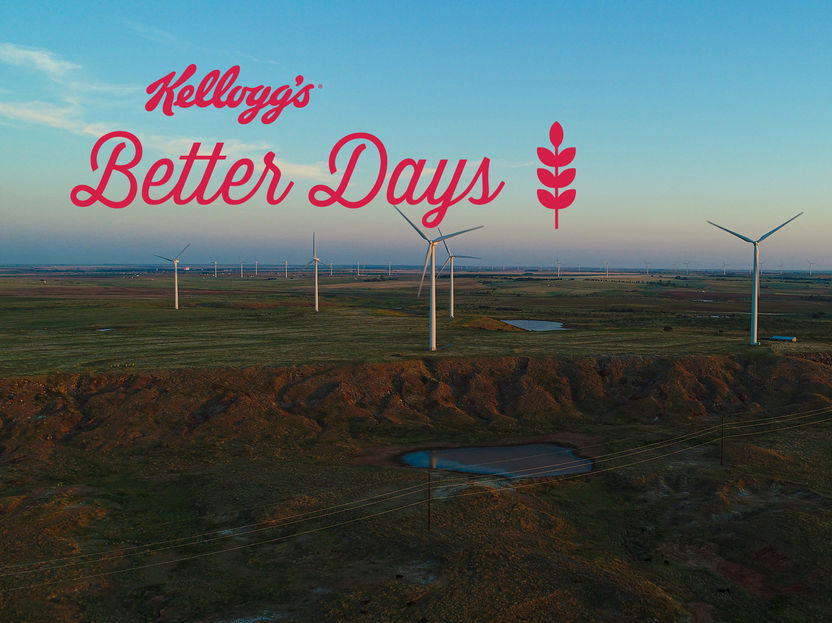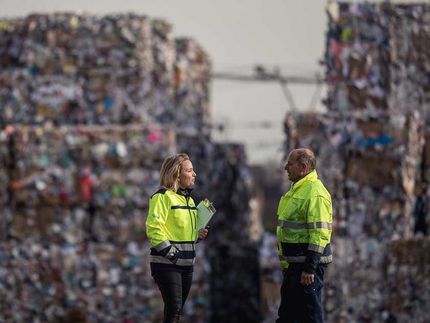Kellogg Company to Achieve Over 50% Renewable Electricity Globally by the End of 2022
Advertisement
Kellogg announced today that the company will achieve over 50% renewable energy to address the electricity needs of its owned manufacturing globally by the end of 2022. The company signed a long-term wind energy virtual power purchase agreement (VPPA) in North America with Enel Green Power for approximately 360 gigawatt hours (GWh) of wind electricity annually, which is equal to 50% of the volume of electricity used across Kellogg's North American manufacturing facilities.

Kellogg
Kellogg's VPPA portion of the renewable energy generated by the wind farm is equivalent to the amount of electricity it takes to power more than 43,000 homes each year.1
This VPPA progresses Kellogg towards its global Better Days commitments to reduce Scope 1 & 2 greenhouse gas emissions by 65% and to achieve 100% renewable electricity by 2050. Kellogg announced the milestone to investors at the Consumer Analyst Group of New York (CAGNY) conference, underpinning the company's commitment to address corporate responsibility. Kellogg measures greenhouse gas emissions and renewable electricity in accordance with the GHG Protocol.
"Kellogg has been working to reduce its carbon footprint across our value chain for more than a decade," said Amy Senter, Chief Sustainability Officer, Kellogg Company. "Our latest VPPA further demonstrates to investors, stakeholders and our consumers that we are taking action to address climate change."
Kellogg has several renewable energy projects already in place around the world.
- Kellogg's facilities across Western Europe have achieved 100% renewable electricity to address its operations through the purchase of Renewable Energy Certificates (RECs).
- Kellogg Australia operations also achieved 100% renewable electricity through a long-term Power Purchase Agreement.
- Kellogg's LEED® certified Pringles plant in Enstek, Malaysia and its cereal plant in Taloja, India utilize renewable electricity directly from on-site solar panels.
- In North America, Kellogg has purchased Renewable Energy Certificates (RECs) for multiple facilities and offices in several states.
- The company's Kashi office in Solana Beach, California utilizes on-site solar panels for portions of its electricity use.
With the support of Kellogg's VPPA, Enel has started construction of Azure Sky wind in north central Texas, its first wind + storage project globally, that combines a 350 MW wind facility paired with approximately 120 MW of battery storage – one of the largest battery storage facilities in the world. The Azure Sky wind farm will add clean energy resources to the community's local grid and is expected to be operational in 2022.
Kellogg's portion of renewable electricity generated by the wind farm is estimated to avoid 250,000 metric tons of CO2 emissions each year, equivalent to the carbon reduction of removing approximately 55,000 passenger vehicles off of the road annually.2 Kellogg was advised on the VPPA agreement by Schneider Electric Energy & Sustainability Services, who assisted the company in its project selection and negotiations.
"As our first project to pair wind and storage, and our largest hybrid plant globally, Azure demonstrates Enel's continued commitment to leading the energy transition towards a 100% renewable powered electric grid," said Salvatore Bernabei, CEO of Enel Green Power. "This transition is supported and accelerated by customers, like Kellogg Company, who are placing sustainability at the core of their business."
As the demand for sustainable investing continues to grow, investors more than ever want to know that companies are actively addressing (ESG) issues. S&P Global recently ranked Kellogg's sustainability performance within the top 15% of the food industry, making Kellogg among the highest performing sustainable companies in the world.
1 Source: Emissions equivalencies calculated by using The U.S. EPA Greenhouse Gas Equivalencies Calculator, based on national averages. https://www.epa.gov/energy/greenhouse-gas-equivalencies-calculator
2 Source: Emissions equivalencies calculated by using The U.S. EPA Greenhouse Gas Equivalencies Calculator, based on national averages. https://www.epa.gov/energy/greenhouse-gas-equivalencies-calculator



































































